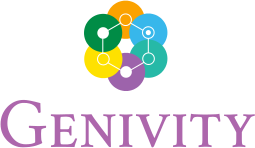Genivity HALO was created in order to bring visibility to the true out-of-pocket costs people will face during their retirement years. But once you see the true numbers for your specific situation (lifestyle, behavior, family health history) what’s the next step?
While your client’s out-of-pocket care cost number may be higher than they anticipated, it’s never too late to adjust their planning and lifestyle to help minimize those costs as much as possible. Below we’ll look at five things you can discuss with your clients to help them lower their health care costs in retirement.
Five Ways to Minimize Health Care Costs in Retirement
- Plan for cash flow, not a lump sum. While the out-of-pocket number may be much higher than your clients anticipated, it’s important to help them plan for the costs as something that will occur on a rolling basis, not all at once. Put a plan in place that allows for maximum cash flow once they enter retirement so they have access to liquid assets easily when needed for medical expenses.
- Identify key controllable lifestyle factors. Many contributing factors to high out-of-pocket care costs in retirement are controllable. While family health history has a strong affect, other factors such as weight, diet, exercise habits, and environmental factors can greatly impact your risk for developing disease or chronic conditions. Use their HALO results to identify the key factors impacting your client’s risk and help them find resources to adjust as needed.
- Adjust their existing retirement plan. Most people miscalculate out-of-pocket care costs in retirement because it’s something they don’t have to think much about when they are working. Employers are often picking up most of the tab and they often forget that once they get into retirement they’ll be responsible for paying 100 percent of their premiums and out-of-pocket expenses (those not covered by Medicare). Make sure that you adjust your client’s retirement plan accordingly once you receive their care cost projections so that they can account for premiums and out-of-pocket costs appropriately.
- Look at long-term care insurance options. Often, clients can be hesitant to purchase LTCI because of the premiums. However, depending upon their personal situation, such as a strong family health history of chronic illness or other pre-existing factors, it may be appropriate to explore such options. Using their HALO results as a starting point, get the conversation started with your clients about LTCI options that may be right for them.
- Explore HSA options. Health Savings Accounts (HSAs) are often available with high-deductible health insurance plans. Helping your clients understand the benefits of using an HSA is an important part of minimizing their health care costs in retirement. HSAs offer a triple tax advantage since contributions are pre-tax or deductible, grow tax-free, and are not taxed upon withdrawal for qualifying health expenses.
Your clients will likely have many questions as they continue to refine their plan and change their lifestyle in order to minimize their care costs in retirement, but these five tips are a great place to start. In addition to helping them implement changes in their plan and lifestyle, it’s important to revisit the HALO assessment at least once a year so you can stay current with your information as you continue to make changes and refine their plans.
